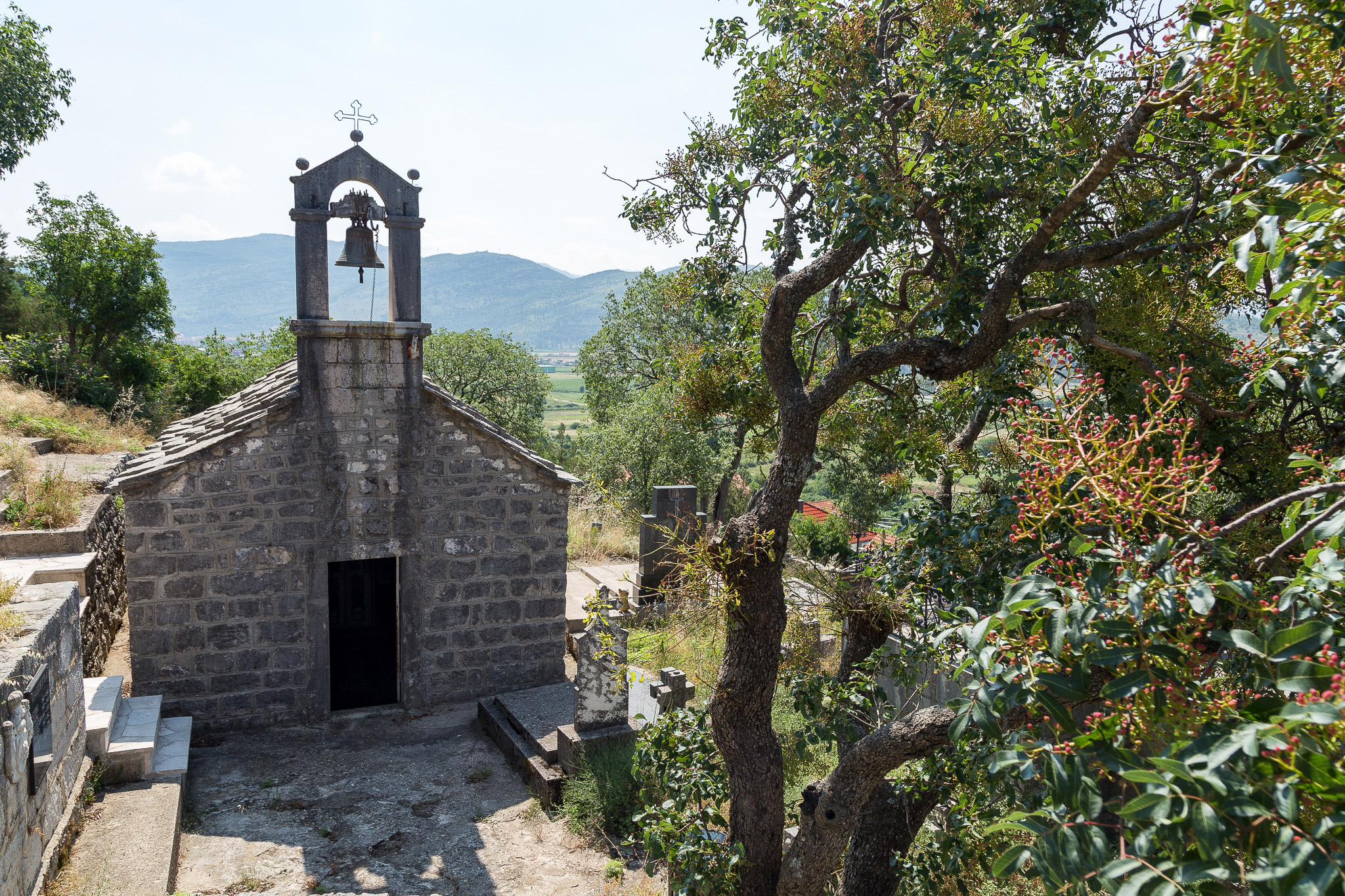
CHURCH OF SAINT CLEMENT
For this rather small but vividly painted church of Saint Clement in Trebinje’s suburban settlement Mostaći, many experts in fresco paintings say is “the smallest” art gallery in the world. The art component dominates the interior of the church, and its painter Vasilje was influenced by styles of several painters. In fresco painting, his iconography was influenced by works of Georgije Mitrofanović, as for his technique, he relied on directions specified in the “Festal Menaion” published in 1538 in Venice. From the inscriptions next to the compositions of painted figures, rendered in Serbian language with phonetic localisms characteristic for Herzegovina, it is evident that Vasilije was a local artisan.
The style of fresco paintings in the church of St. Clement is a mixture of different artistic styles present in a small region.
The holy doors from the XVII century, adorned with rich carving, made by an unknown craftsman imitating the style of an artist Georgije Mitrofanović, have been preserved and are still in use. The icons of the Mother of God with Christ, John the Baptist and the Apostle Peter were painted by an unknown artist around the middle of the XV century.
The church was built at the beginning of the XVII century as a tomb chapel for a medieval aristocratic family, and painted according to Radoje Mihaljević’s wish in 1623. It stands as an extraordinary representative of sacred architecture outside the realm of monasteries and urban centres. Located in the Trebinje settlement of Mostaći, 2 kilometres from downtown, the church, also known as Klimentica among the locals, is dedicated to Saint Clement of Rome, a saint widely respected and celebrated due to huge influence of Roman tradition. Traces of the cult of St. Clement can still be found on the territory of south Dalmatia, more precisely in Dubrovnik and Kotor.
Latitude: 42.712053, Longitude: 18.334267



